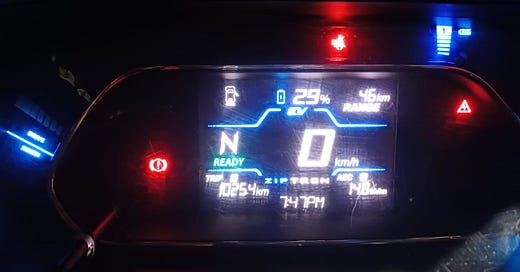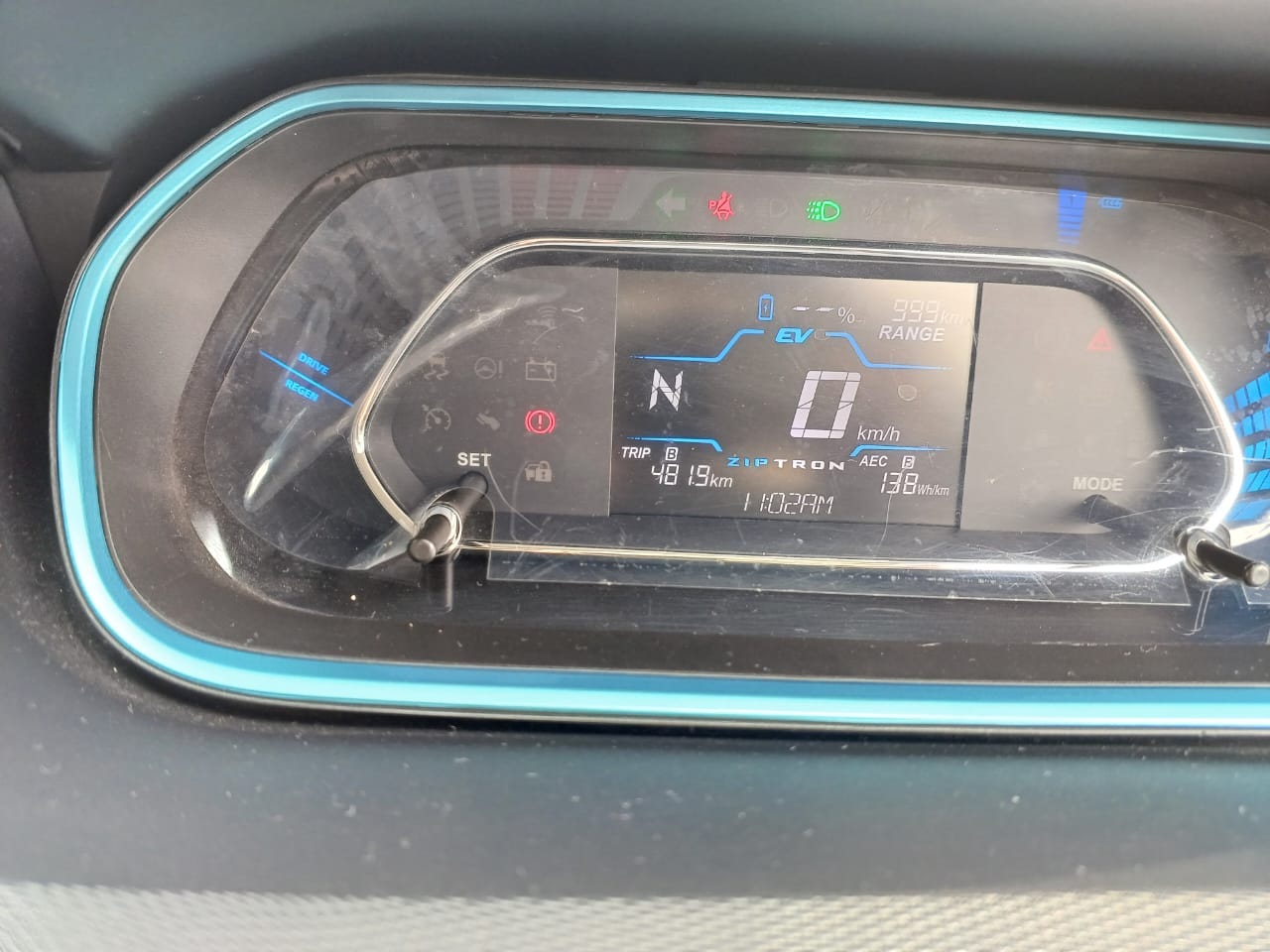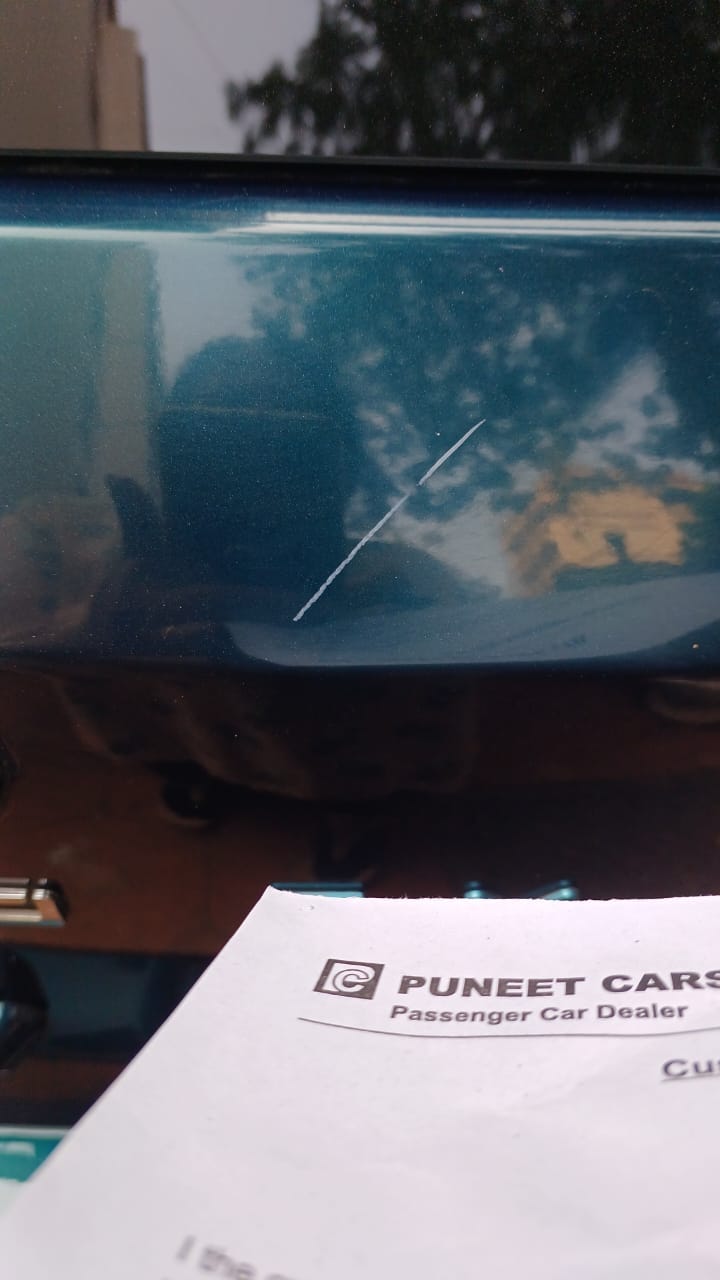Whrring #4 - Tata's High Volt Critical Error
Repeated faults of high voltage critical error. What does it mean?
TataEV has 70-75% share of the Indian passenger electric vehicles market. They have the Tata Nexon, Tata Tigor and Tata Tiago EV for consumers. I bought the Tiago EV in Jan this year. My parents have been using the car in Mumbai while I am in Delhi with my MG ZS EV.
Imagine you are on your way to an important meeting, or on a holiday road trip. Your car suddenly stops showing you the State of Charge (SoC) or the range of the car. The car automatically shifts to neutral and you can’t put it in drive mode. You’ll have to bring the car safely to a halt and then the car will give up on you. The car will also show “High Volt Critical Error” on screen.
In the last two months, my Tiago EV has faced this issue not once or twice, but thrice. Before I tell you more, here is a word from my company.
Mumbai and Delhi are in headlines yet again this year for bad air quality. I recommend getting your indoor air quality checked at the earliest. The test starts from a mere INR 699 and is available in all major metro cities in India. Reach out to activebuildings.io to get it done today.
Disclosure - I am the cofounder of ActiveBuildings
The first error
The first error happened when my parents were on their way to Nashik to attend an event with their friends. The car got stranded on the ghats. The car was at 61% SoC. My parents didn’t know what to do. They called me. I reached out to a few community groups. I was told to keep the car locked and walk away from it for around 5-10 mins.
It was very difficult to park the car on narrow ghat roads. My parents somehow managed to do it. After 10 minutes, the car started behaving like it should. I reached out to Tata and decided to get the car checked with the service center. The default way to schedule a service is to use the app made specially by Tata for servicing EVs - EV TMSC.
After multiple futile attempts to book a service for my car, I took to X (Twitter) to complain. TataEV asked for some details on direct message, but didn’t bother to do anything about it.
The second error
Within 3 weeks of the first incident, the car got stranded again. I was not in Mumbai and my mother was driving the car. The car’s SoC was at 29%. The car, luckily, shut down right outside the building. The building watchman and a few other people helped push the car safely into the building compound.
This repeat incident really shook the confidence of my parents in Tata EV cars. They put the car on slow charging and the car started charging.
The third error
I was visiting Mumbai for an event hosted by Tata EV, also known as Tata EV Charging day. Tata Motors paid for my travel from Delhi to Mumbai and back. I am not at liberty to discuss what happened at the event because all the participant had to sign a non disclosure. The details to the event are irrelevant to this post.
The event was at JW Marriott, Juhu, Mumbai. The venue was less 5 km from my home. Naturally, I took the Tiago to the event. A short distance from the venue, the car started showing signs of the impending critical error. The car was at above 90% SoC.
I somehow made it to the venue but the car broke down at the entrance of the hotel. The staff at the hotel helped push the car at a safe spot for Tata officials to come and inspect the car. Mr. Amit Goyal, the head of India EV service came to the rescue, along with Omkar Shaligram, the deputy general manager at Tata EV.
They called for a technician with a laptop to diagnose the issue. The car was switched off for a few mins and the error went away, as usual. The Tata officials said that they will diagnose the issue and then let me know. From here, Tata EV took went to Puneet Motors in Worli, Mumbai.
It took them 10 days to return the car with a couple of new scratches. They’ve promised to fix the scratches by 6th November.
What happened at the workshop?
I had to follow up regularly with various people at Tata EV. Workshop incharge, city level service manager and the India EV service head. Tata has really bad customer service.
The technical team downloaded a bunch of data from the car. They tried debugging the data but couldn’t reach to any definitive conclusion. After trying to fix the car for two days, they realised that they needed more time to fix it. They sent a loaner car, a Petrol Nexon, for my family to use while they worked on the Tiago EV. The Nexon had a very weak auxiliary battery with little to no pressure in the tyres. My dad had to push the car to get it started.
Back to the Tiago EV: from what I understand, HV Critical error can come due to any number of reasons. It is considered as a “fail safe” mode. TataEV believes that this issue comes up because of one of the three major reasons - sensors in the car get disconnected, communication lines from the sensors to the control systems in the car are broken, or there’s some issue in the battery pack. One error for a lot of encompassing issues. Bad strategy, in my opinion.
They checked the sensors first and didn’t find any issue. They then checked the communication lines. They did a road test and didn’t find any errors. I asked them to recheck the car because I didn’t believe they had tested it thoroughly. They took the car on a second road test and got the same HV Critical error. The TataEV team didn’t bother to give me these updates till I followed up with them.
The technical team concluded that there is an issue with the battery pack. What issue you ask? No one knows yet. A battery engineer came to the workshop, disconnected the Battery Management System (BMS) and connected a new BMS. They did a 30-40 km road test, didn’t find any issues and concluded that the issue is fixed.
What now?
TataEV couldn’t give me any guarantee that this dangerous error will not appear again. I questioned them to understand what exactly went wrong with the BMS. They had no answers because it has not been debugged yet. I’ll update the post once I get a response from them.
The City Service Manager claimed that there could be a shorting in the BMS or a manufacturing defect or the connector had become loose. No definitive answers. I asked various people in TataEV to give me the steps to avoid this issue in the future. No one could give me any concrete guidelines.
I am not the only one facing these issues. There are hundreds, if not thousands of TataEV customers, facing this same issue. Many people have had their battery packs changed, presumably because TataEV couldn’t identify the issue. Join the communities here to see for yourself.
There’s a community belief that this error usually happens because the car is not regularly discharged and charged to 100%. I take good care of the battery and often discharge it to under 10%. I’ve rarely fast charged the car. The car’s slow charging is also till 100% with enough time to balance the battery pack cells. I’ve been following the guidelines mentioned by TataEV, so faulty battery pack or BMS is unlikely to be the issue.
Hardware manufacturing, especially the auto industry, is really hard. There is a steep learning curve for existing OEMs to switch to electric vehicles. The Tata Group is a behemoth and if any group can do it successfully, my money would be on Tata Motors. It is very difficult for TataEV team to diagnose and fix the issue locally because a lot of critical technology and components are imported by TataEV from a Chinese auto manufacturer, namely Gotion.
TataAutoComp purchases Battery Management Systems and Battery Packs from Gotion. Here’s the screenshot from Gotion’s 2023 half yearly report stating the same.
Here’s another photo of the BMS, courtesy rushlane.com, indicating that it is from Gotion.
Conclusion
TataEV needs to do the following :
Be transparent with customers. If there’s a problem being faced by thousands of customers over many months, they need to publicly acknowledge the issue, recall the cars and push an update.
Communicate and educate the charging guidelines to the consumers. The dealerships and service technicians do a shoddy job.
Many owners have had their cars stuck at the dealership for weeks without them getting a loaner car. The service should be similar across board.
Fix EV TMSC app. I have been unable to book a single service via the app. Residents of non metropolitan cities have had a better luck booking a service.
Localize the RnD and production.
The early adopters have signed up to be the guniea pigs and we very well are.












So one generic error message for multiple possible errors
Even the Reva electric car company showed different error codes in 2013 in the e2o.
This is problem with Tata, Mahindra who have sold electric cars using imported components and when diagnosing issues they just replace components and hope it solves the issue. The root cause is not known.
The Reva electric car company in 2012, 2013 had a more local component ecosystem which ensured more control on repairs. But ofcourse once Mahindra took over they destroyed every advance made by the Reva team. And in 2023, here we go taking 5 steps backward.
Thanks for documenting this Priyans.
Such transparent and detailed reporting is what is needed to actually understand the real problems and the take steps to overcome them. Thank you